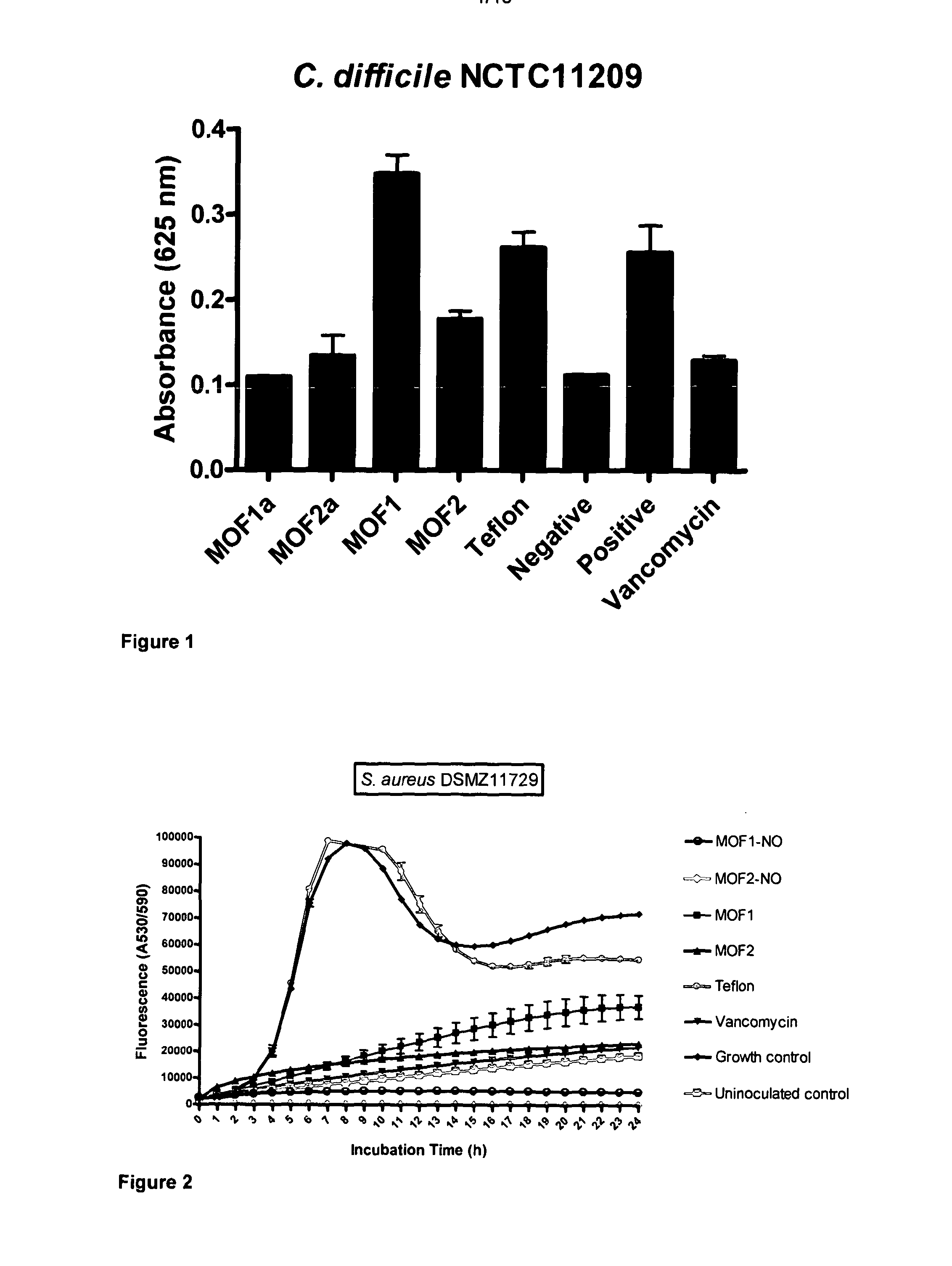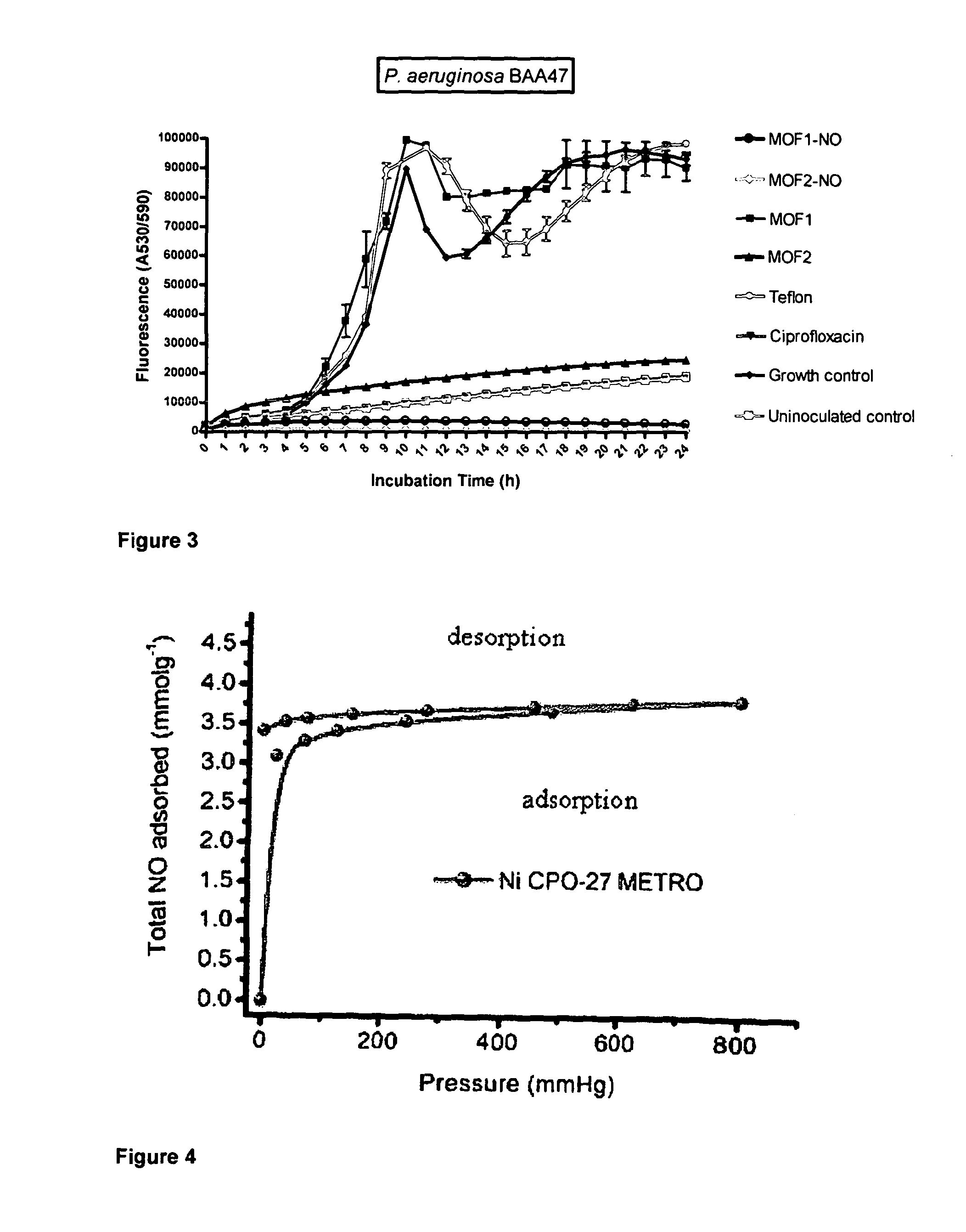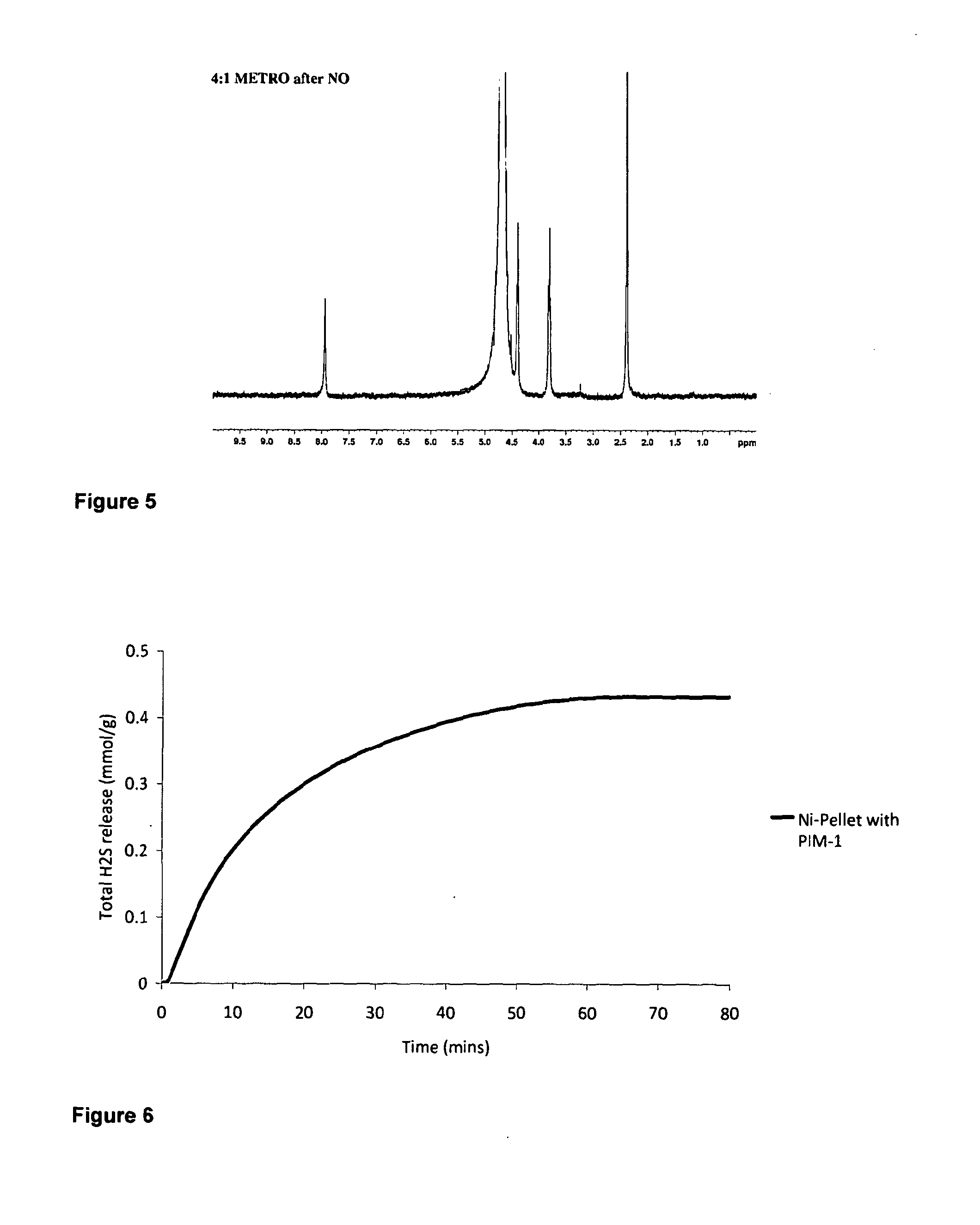Anti-microbial metal organic framework
a metal organic framework and anti-microbial technology, applied in the direction of biocide, group 1/11 element organic compounds, disinfection, etc., can solve the problems of cost of manufacture, achieve the effect of reducing the bacterial load in a short time, releasing more slowly, and keeping the bacterial load at low levels
- Summary
- Abstract
- Description
- Claims
- Application Information
AI Technical Summary
Benefits of technology
Problems solved by technology
Method used
Image
Examples
example 1
Antibacterial Activity of Ni—CPO-27 (MOF1)
Novelty: First Demonstration of Anti-Bacterial of a MOF Itself
[0129](i) Synthesis of Ni—CPO-27 [Adapted from P. D. C. Dietzel, B. Panella, M. Hirscher, R. Blom and H, Fjellvag, Chem. Comm., 2006, 959-961]
[0130]A solution of nickel acetate tetrahydrate (0.373 g, 1.5 mmol) in water (10 mL) and a solution of 2,5-dihydroxyterephthalic acid (0.149 g, 0.75 mmol) in tetrahydrofuran (10 mL) were combined in a Teflon-lined autoclave and reacted at 100° C. for three days. The product was collected by filtration and washed with water.
(ii) Preparation of Discs for Anti-Microbial Testing
[0131]Teflon (polytetrafluoroethylene) and the required MOF were mixed homogeneously in a 20:80 wt % ratio, respectively. This mixture was then pressed into discs (0.020 g, 5 mm diameter) using 2 tons pressure for 30 seconds. Teflon controls (0.020 g) were prepared using the above method.
(iii) Sterilisation of Discs
[0132]The discs were placed in glass ampoules and heated ...
example 2
Antibacterial Testing of NO-Loaded Ni—CPO-27 (MOF1-NO)
Novelty: First Demonstration of Improved Antibacterial Activity Through Two Different Mechanisms
[0154](i) Samples of Ni—CPO-27 MOF were synthesised as per example 1 sections (i) to (iii)
(i) Nitric Oxide Loading of Teflon-MOF Discs
[0155]The discs (as prepared in example 1) were placed in glass ampoules and heated at (150° C. for Ni—CPO-27 and 260° C. for Zn—CPO-27) for 5 hours under vacuum (1×10−4 torr). The discs were cooled and then placed in an atmosphere of nitric oxide (2 bar) for 30 minutes. This was then evacuated, replaced with argon. Evacuation-argon procedure was repeated twice more. The final samples were placed over an atmosphere of argon and flame sealed.
(ii) Antibacterial Testing was Completed as in Example 1.
[0156](iii) Results
[0157]The NO-loaded Ni—CPO-27 showed bactericidal effects against all 3 strains of bacteria[0158]1. Clostridium difficile NCTC11209[0159]2. Staphylococcus aureus DSMZ11729[0160]3. Pseudomonas ...
example 3
Synthesis of Metronidazole-Loaded Ni—CPO-27 (MOF1-Met)
Novelty: First Demonstration of Loading an Antibacterial Molecule Inside an Antibacterial MOF (or Any MOF)
[0162]The Ni CPO-27 samples were degassed at 150° C. overnight to ensure full dehydration. These were then sealed in the vials for use later.
[0163]Calculated amounts of metronidazole were added into a glass jar, to this an amount of dry methanol was added and the jar was sealed while the metronidazole dissolved.
[0164]Once the metronidazole was dissolved an appropriate amount of the dehydrated Ni CPO-27 was added. The mixture was then left stirring for 2 days.
[0165]The mixture was filtered and washed with methanol before being air-dried.
[0166]Elemental analysis, TGA and 1H NMR measurements were used to prove that metronidazole had indeed been adsorbed in the pores of Ni CPO-27. CHN elemental analysis, using the calculated and expected ratios of both the hydrated and activated samples of Ni CPO-27 as a comparison shows that met...
PUM
| Property | Measurement | Unit |
|---|---|---|
| porosity | aaaaa | aaaaa |
| pressure | aaaaa | aaaaa |
| pressure | aaaaa | aaaaa |
Abstract
Description
Claims
Application Information
 Login to View More
Login to View More - R&D
- Intellectual Property
- Life Sciences
- Materials
- Tech Scout
- Unparalleled Data Quality
- Higher Quality Content
- 60% Fewer Hallucinations
Browse by: Latest US Patents, China's latest patents, Technical Efficacy Thesaurus, Application Domain, Technology Topic, Popular Technical Reports.
© 2025 PatSnap. All rights reserved.Legal|Privacy policy|Modern Slavery Act Transparency Statement|Sitemap|About US| Contact US: help@patsnap.com



